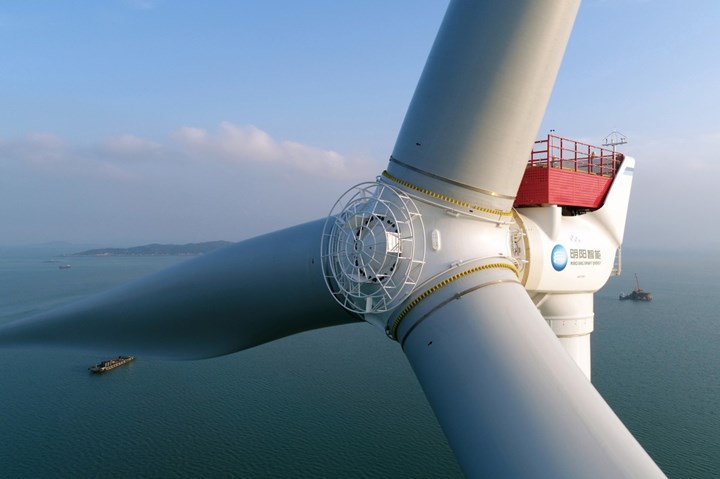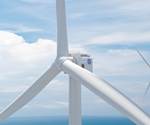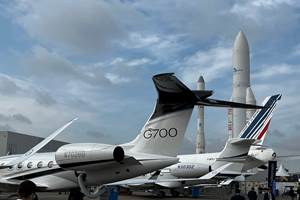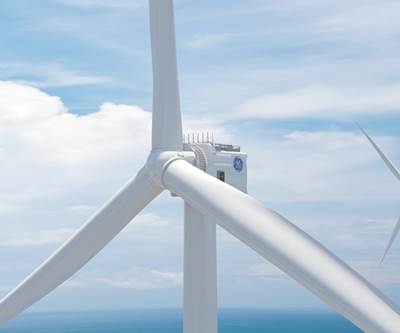MingYang Smart Energy launches MySE 16.0-242 offshore hybrid drive wind turbine
Reported to be the world’s largest offshore hybrid drive wind turbine with a 242-meter diameter rotor, 118-meter-long blades and 46,000-square-meter swept area, the MySE 16.0-242 enhances energy production, CO2 elimination and efficiency capabilities.

The MySE 16.0-242 offshore hybrid drive wind turbine. Photo Credit: MingYang Smart Energy
MingYang Smart Energy (China), motivated to drive the continuous iteration and evolution of wind turbine technology, reports that it has reached a new milestone with the introduction of the new MySE 16.0-242, what the company claims is the world’s largest hybrid drive wind turbine.
Designed for high-wind IEC IB including typhoon-class IEC TC, the MySE 16.0-242 features a nameplate capacity of 16 megawatts (MW), a 242-meter diameter rotor, 118-meter-long blades and a 46,000-square-meter swept area equivalent of more than six soccer fields.
In addition to having what is said to be the industry’s largest rotor and highest nominal rating, a single MySE 16.0-242 turbine can reportedly generate 80,000 megawatt-hours of electricity every year, enough to power more than 20,000 households. In comparison, it produces 45% more energy than MingYang’s previous turbine model, the MySE 11.0-203.
The environmental benefit is also considerable, MingYang says. Compared to coal-fired power generation, one MySE 16.0-242 can eliminate more than 1.6 million tonnes of CO2 emissions over the course of its designed 25-year lifespan, making it a strong contributor to achieving the goal of carbon neutrality.
Extending the legacy super-compact design and hybrid-drive concept, MySE 16.0-242 builds on MingYang’s deep understanding and expertise gained over multiple smaller, lightweight offshore models, ranging from its 5.5 MW, 6.45 MW, 7.25 MW, 8.3 MW and 11MW series.
For example, the nacelle weight of the MySE 16.0-242 is less than 37 tonnes per MW. Compared to a heavier nacelle, MingYang notes, its head mass enables more efficient use of the tower and foundation construction, resulting in fewer purchased materials and logistics.
MySE 16.0-242 is scheduled for full prototype rollout in 2022, to be followed by prototype installation in the first half of 2023 and commercial production in the first half of 2024.
MingYang’s hybrid-drive transmission technologies, particularly the medium-speed planetary gearbox with load sharing and forced high-precision main bearing lubrication, also have been fully optimized and inherited to ensure the robustness and efficiency of this new turbine, as well as deliver improved economic performance on both bottom-fixed and floating system applications.
In addition, MySE 16.0-242 is said to provide other distinctive advantages by adopting novel offshore-dedicated features and “best practice” technologies. To begin, as a new feature over previous models, all power electronics and MV-transformer have been relocated up tower into the nacelle, simplifying cabling and enhancing system maintenance convenience. Second, an air-tight design protects the nacelle from harsh salt spray corrosion while enabling internal natural air cooling.
In summary, the MySE 16.0-242 is the start of the MingYang’s new 15 MW+ offshore product platform. In the future, it is planned to grow into a portfolio of model variants that can adapt to various offshore settings, ranging from the typhoon-prone South China Sea to the constantly windy North Sea in Europe.
“The launch of our new largest wind turbine, MySE 16.0-242, is an apt illustration of the three essential drivers to technology evolution — demand, combination and iteration,” says Qiying Zhang, president and CTO of MingYang Smart Energy. “In response to demand for anti-typhoon wind turbines in coastal Guangdong, MingYang systematically develops high-quality products by collaborating with global supply chain partners and integrating cutting-edge technologies from industries such as aerospace, materials and big data.”
MingYang is committed to growing its global presence and serving customers in all mainstream offshore wind markets including Europe, the Americas and Asia-Pacific. As part of its key global strategies, MingYang established the business and engineering center in Hamburg, Germany, and is also exploring developing overseas manufacturing facilities.
With the launch of MySE 16.0-242,MingYang reports that it has set a new benchmark for offshore wind technology and scale, and taken another step forward in its mission to benefit the world by reducing levelized cost of energy (LCOE). MySE 16.0-242, which was recently certified by DNV and China General Certification Center (CGC) for design, is scheduled for full prototype rollout in 2022, to be followed by prototype installation in the first half of 2023 and commercial production in the first half of 2024.
Related Content
Recycling end-of-life composite parts: New methods, markets
From infrastructure solutions to consumer products, Polish recycler Anmet and Netherlands-based researchers are developing new methods for repurposing wind turbine blades and other composite parts.
Read MoreTU Munich develops cuboidal conformable tanks using carbon fiber composites for increased hydrogen storage
Flat tank enabling standard platform for BEV and FCEV uses thermoplastic and thermoset composites, overwrapped skeleton design in pursuit of 25% more H2 storage.
Read MorePartners recycle A350 composite production waste into adjustable-length rods for MFFD
Herone, Spiral RTC, Teijin Carbon Europe and Collins Aerospace Almere recycle A350 thermoplastic composite clips/cleats waste into rods for the all-thermoplastic composite Multifunctional Fuselage Demonstrator’s crown.
Read MoreParis Air Show 2023 highlights
The Paris Air Show, one of the largest aerospace trade shows in the world, returned for the first time since 2019 and proved that the global aviation industry industry is very much alive and kicking.
Read MoreRead Next
GE to develop largest, most powerful wind turbine
The Haliade-X will feature a 12 MW direct drive generator and 107m-long blades.
Read MoreAll-recycled, needle-punched nonwoven CFRP slashes carbon footprint of Formula 2 seat
Dallara and Tenowo collaborate to produce a race-ready Formula 2 seat using recycled carbon fiber, reducing CO2 emissions by 97.5% compared to virgin materials.
Read MoreVIDEO: High-volume processing for fiberglass components
Cannon Ergos, a company specializing in high-ton presses and equipment for composites fabrication and plastics processing, displayed automotive and industrial components at CAMX 2024.
Read More
























